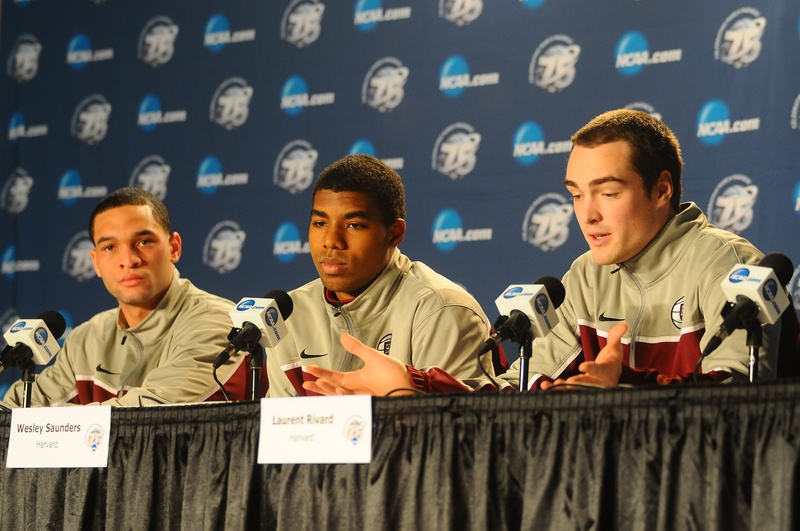The appeal of March Madness lies in its unpredictability. The odds of filling out a perfect bracket are worse than 1 in 100 billion, which you recognize to be true every year on the first Friday of the tournament when your surefire Final Four pick is upset by the No. 15 seed.
But with the rise of data analytics in basketball, some of that unpredictability has been mitigated. Now, it’s possible to see a little more clearly which out-of-nowhere teams were actually Cinderellas-in-waiting all season.
In March 2012, John Ezekowitz ’13 authored a post on the Harvard Sports Analysis Collective’s blog identifying which factors were most predictive of an underdog pulling off an upset in the NCAA Tournament. Ezekowitz examined all second-round (née first-round) upsets in the tournament from 2004 onward and tested various team statistics to see which correlated most with a team’s knocking off a favored opponent.
The two primary areas of the game that Ezekowitz’s model identified as key to an upset were turnovers and rebounding. Intuitively, the importance of turnovers makes sense; to defeat a more talented team, one’s best chance is to resort to high-risk, high-reward tactics. One could also see how rebounding could assume additional importance in a one-game elimination scenario, providing extra scoring opportunities on the offensive end and reducing those extra chances for the opponent.
So how does the Harvard men’s basketball team fit the profile of a dangerous underdog? Fairly well, as it turns out. The Crimson ranks 23rd out of 351 Division 1 teams in opponent turnover percentage, forcing takeaways on 20.9 percent of possessions. Harvard also does an excellent job on the defensive glass, rebounding of 74.8 percent of its opponents’ misses, good for 22nd in the country. The Crimson does not do quite as good of a job taking care of their ball (113th in turnovers per possession) or on the offensive boards (111th), though they are well above average nationally in both categories.
Harvard is also dangerous in another category important for high-variance performance: three-point shooting. Though the Crimson attempts only 14.9 three-pointers per game (311th in the country), the team shoots 39.0 percent from deep, which puts them 24th in the nation.
Once the team discovers its second-round matchup, Harvard’s odds of pulling an upset will likely be higher than they were last year, when the Crimson knocked off No. 3 seed New Mexico. The two most mainstream data-driven ranking systems, compiled by Jeff Sagarin and Ken Pomeroy, rank Harvard as the nation’s 35th and 33rd best team, respectively. At the end of 2013, even after the Crimson knocked off the highly-touted Lobos, Harvard placed 87th and 92nd by the same metrics. Though much of its upset hopes will hinge on the particular matchups it faces with its second-round opponent, the Crimson should approach the contest with confidence, knowing it has the quality to play with whomever it draws.
—Staff writer Andrew R. Mooney can be reached at mooney@college.harvard.edu
Read more in Sports
For Casey, Returning to the Crimson Means Sharing the Spotlight













